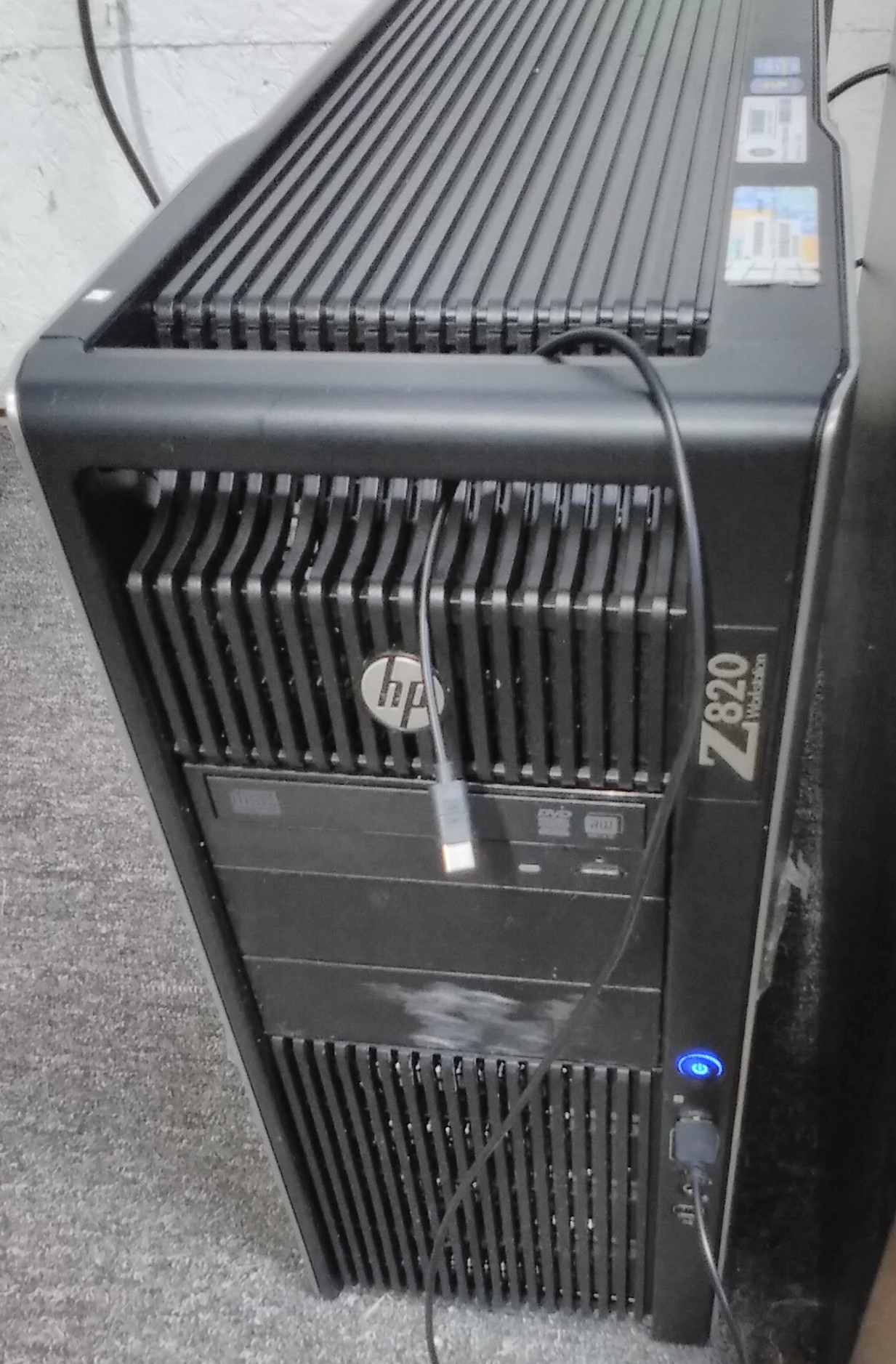There are quite a few HP Z820 machines coming on the aftermarket. Their days of being high end CAD and board layout systems are behind them, but their days of massive yocto builds are already here. True to form most of these will have the video card removed. Don’t be surprised if the disk drives are all gone. Good luck getting Windows 7 activated with the SOA on the case.
Many of the contracts reaching out to me today are doing so because they see I’ve done some yocto builds in the past. Most of them think you can do something like that with a $400 laptop. No. When I was at Welch Allyn I remember our yocto/embedded OS person fought to get the biggest baddest i7 server in the data center. One build still took over 24 hours. I think he eventually trimmed the contents down enough to get the build down to 16 hours. You don’t get a lot of trial and error with those kinds of compile times.
What Got Me Started
My current client had sent me a Dell T5500 with their VPN software on it to use.

As a general rule I don’t like Dell products. They always seem to get cheaped-out in places that really hurt you. This one didn’t have USB 3.x, but it might have been too old for that. It had two Intel Xeon CPU and north of 20GB of RAM. You also needed to bend at the knees when you picked the thing up.
When it came to the virtual machine I used for yocto work this machine impressed the Hell out of me. I gave the VM 18GB of RAM and all but 2 of the physical core. My from scratch yocto build completed in just under 3.5 hours. That was with adding, not removing, things from the build.
Thus began my itch for a new old toy stacked with RAM and cores. On eBay I found an HP Z820 with 20-core and 128GB of RAM. There were no drives or OS, but for under $500 they put all of the drive trays in and agreed to ship it. My collection of “extra parts” never seems to go down. Rather it seems to always grow. I found another vendor that had a 2.5 tray for SSD because I had a shiny new 1TB SSD just sitting here. In the end I installed 1TB SSD, new 4TB Segate spinning SATA for my main data disk, and a matched pair of used Segate 1TB drives as a RAID mirror set.
Begrudgingly Windows 10
Given almost everyone wants you to put their VPN on your machine, I bought a retail Windows 10 package and installed it. Yes sir, yes sir, three bags full, this is where the problems started. Oh, the install went fine. I even installed HP Assistant so it could update all of the drivers. Only trouble is, HP Assistant for this model hasn’t been upgraded since Windows 7 was “current.”
Couldn’t format the RAID drive. A bit more poking around showed that the SAS controller (LSI RAID controller) and the PCI Serial Port did not have drivers loaded. I poked around on all of the support forums like a good little geek. Everything I was told to download and try was either a broken link or refused to install.
Started an on-line chat session with HP support via my HP account.
“We don’t support Windows 10 on that machine.”
HP chat support
Oh, really? There seem to be all kinds of Windows 10 drivers for it, just not the ones I need.
The Solution
After a bit of back and forth, he coughed up this link. The official Windows 10 drivers for quite a few Z models. It’s almost 500MB to download so dial-up and metered connection users beware. When you run it don’t just happy-key your way through it. You want to override the directory where it puts all of the driver files because the default location is both impossible to remember and not a place Windows 10 Driver manager looks for drivers.

You aren’t going to remember that and Device Manager doesn’t look there. Choose a path you can actually remember. Why? Because you are going to have to right click on every device and tell Device Manager where to look. Once you do that, both you and Device manager will be very happy.

